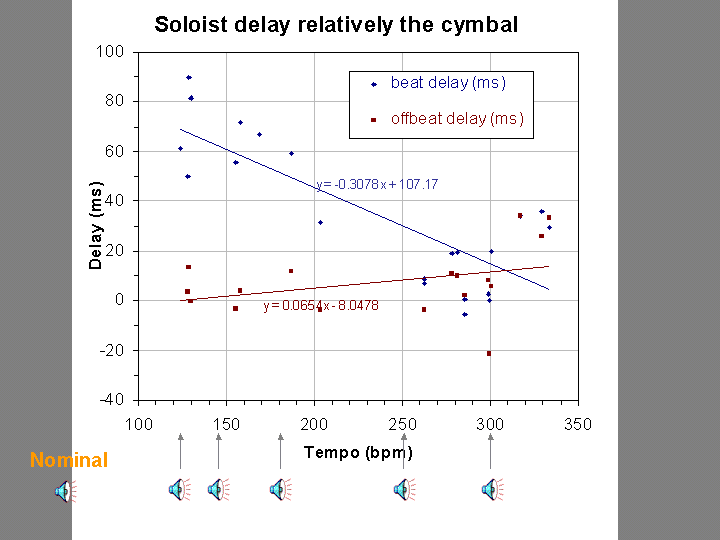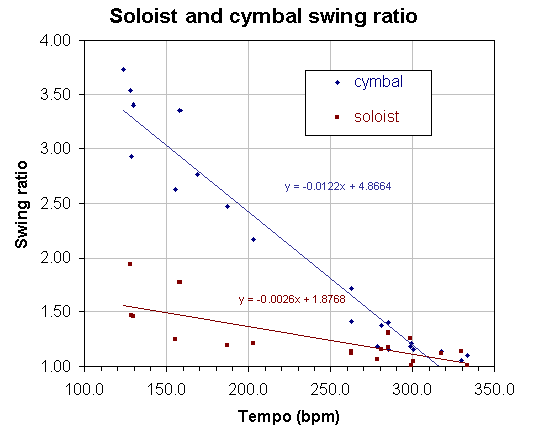
T
his example demonstrates the effect of the ensemble-swing rule which applies
long-short patterns on conseqecutive eighth notes for the soloist and the
drummer and delays the onsets of the soloist's downbeat. The amount of swing
ratio (ratio between long and short note) and delay for each instrument
is taken from average values of measurements of classical jazz group recordings,
such as Miles Davis Quintet from '64, Wynton Marsalis group, Live at the
Blues Alley, and Keith Jarrett Trio.


Figure 2. Measured delays of soloist relatively drummer. The blue dots marks the downbeat delay of the soloist and the red dots the offbeat delays. Note that in medium tempi, all soloists are delayed relatively the drummer on the downbeat and synchronized on the upbeat.
The music examples are synthesized with
timing according to the regression lines in the figures at the specified
tempo.
More information about the measurements is found in:
Friberg, A. and Sundström, A. (2002). Swing ratios and ensemble timing in jazz performance: Evidence for a common rhythmic pattern. Music Perception 19(3), 333-349
Hamer, M. (2000) All that jazz . New Scientist 23/30 December 2000, 48-51.
Friberg, A. and Sundström, A. (1997) Preferred swing ratio in jazz as a function of tempo, Speech Music and Hearing Quarterly Progress and Status Report, 4/1997, pp. 19-28.
Back to Music Performance Main Page